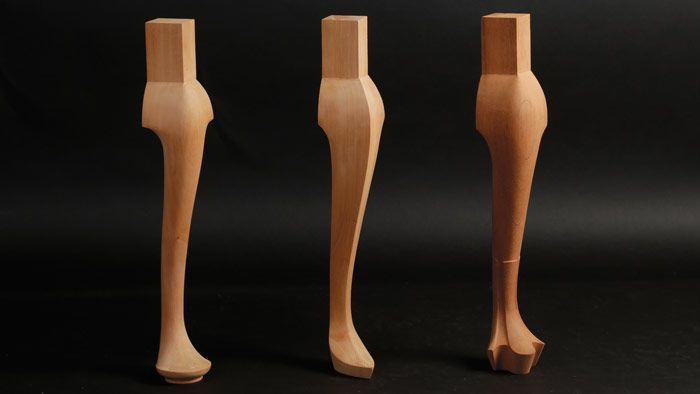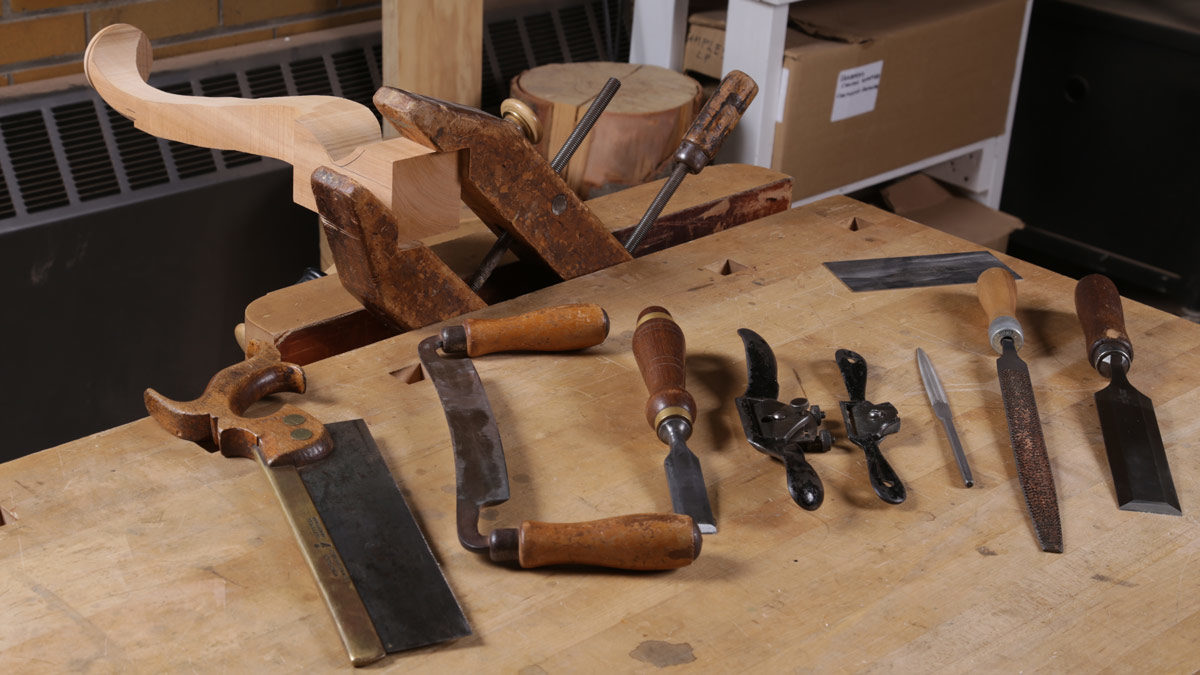One Cabriole Leg, Three Different Feet
A step-by-step guide to creating three distinct period feet for the cabriole leg.

Synopsis: The classic cabriole leg is a solid design choice for period furniture makers, but after making the decision to use cabriole legs in a piece, furniture makers then have to choose from a variety of foot designs. Here, Steve Brown discusses the layout and execution of three common feet for the cabriole leg: the pad foot, the slipper foot, and the trifid foot.
Period feet for the cabriole leg
In the furniture making program at North Bennet Street School, students usually find inspiration for their projects in books from our extensive library. They’ll find many examples of period pieces, but they’ll also find more contemporary work. What they won’t find is any lack of possibilities. Sometimes limiting their options is the hard part. If a furniture maker is inspired by the cabriole leg, for example, they still have to decide what kind of foot to put on it. There are a lot of options.

To clarify a few of them, I will focus here on three common feet for the cabriole leg: a turned pad foot, a slipper foot, and a trifid foot. All three share some basic steps in layout and execution. For each I’ve provided a side-profile pattern of the whole leg and a plan-view pattern of the foot, which you can trace onto the bottom of the blank. These two patterns, which embody the sophistication of 18th-century furniture design, are used to create three-dimensional sculptural feet in a way that is surprisingly simple.
The turned pad foot is essentially a flattened oval-shaped block of wood that rests on a disk or pad. The pad foot is sometimes referred to as a Dutch foot or spoon foot.
The slipper foot, which was popular in the Queen Anne period, is aesthetically spare and a very elegant solution to the cabriole leg.
The three-toed paw or trifid foot has animal-like toes and is found on many traditional furniture pieces. I refer to its three divided or cleft elements as toes because the other name for the trifid is a Drake’s foot, suggesting that it resembles a duck’s three toes.
For the full article, download the PDF below.
More on FineWoodworking.com:
- Video Workshop: How to Carve and Turn a Cabriole Leg by Philip C. Lowe
- The Contemporary Cabriole
By Jonathan Binzen #212–May/June 2010 Issue - Carve a Shell on a Cabriole Leg – Though it seems intimidating, carving is easier than you might think
By Lonnie Bird #210–Jan/Feb 2010 Issue
Fine Woodworking Recommended Products

Compass

Sketchup Class

Drafting Tools








Log in or create an account to post a comment.
Sign up Log in